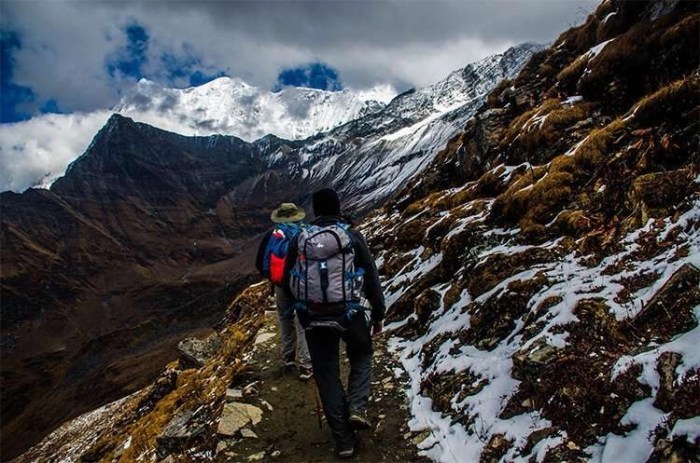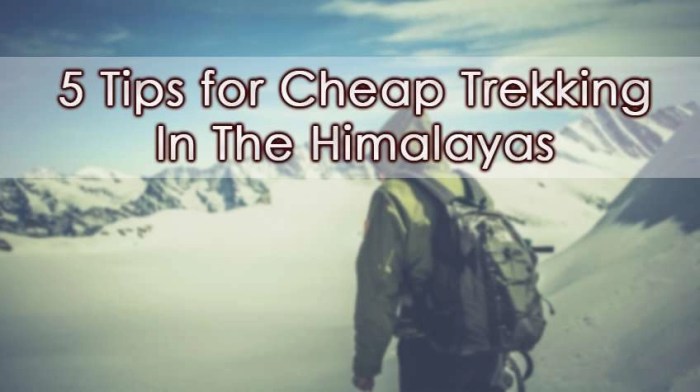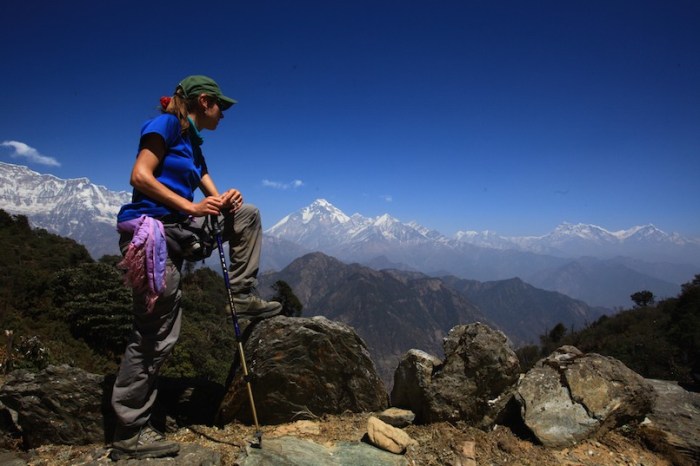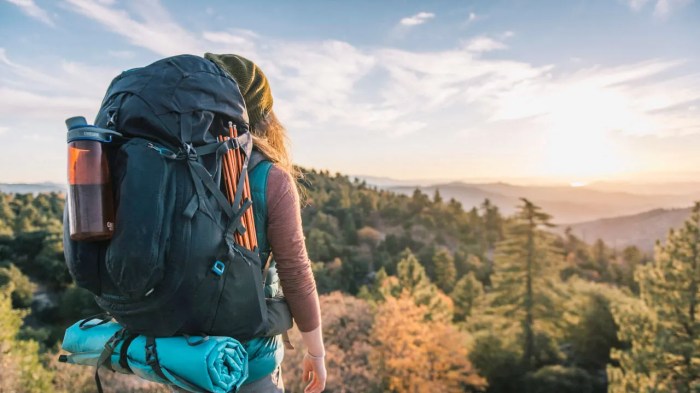Embark on an unforgettable journey with cheap trekking holidays, where breathtaking landscapes and budget-friendly adventures await. Whether you’re a seasoned trekker or a first-timer seeking an immersive experience, this guide will equip you with all the essential knowledge and tips to plan an epic trek without breaking the bank.
From exploring hidden trails to savoring local flavors, cheap trekking holidays offer a unique blend of adventure, affordability, and cultural discovery. Get ready to lace up your boots and delve into the world of budget-conscious trekking.
Affordable Destinations
Embark on unforgettable trekking adventures without breaking the bank. Explore a range of budget-friendly destinations that offer breathtaking landscapes, cultural experiences, and affordable accommodations.
Consider these destinations for an unforgettable trekking experience:
Nepal
- Estimated cost: $500-$1000 per week
- Duration: 7-14 days
- Difficulty: Moderate to challenging
Immerse yourself in the majestic Himalayas, home to Mount Everest. Trek through diverse terrains, from lush forests to high-altitude passes, and encounter warm and welcoming locals.
Peru
- Estimated cost: $400-$800 per week
- Duration: 4-10 days
- Difficulty: Easy to moderate
Discover the ancient Inca Trail leading to the iconic Machu Picchu. Traverse stunning Andean landscapes, explore Inca ruins, and witness the vibrant culture of the Quechua people.
Thailand
- Estimated cost: $300-$600 per week
- Duration: 3-7 days
- Difficulty: Easy to moderate
Venture into the lush jungles and mountainous regions of Thailand. Trek through national parks, encounter exotic wildlife, and experience the warm hospitality of the Thai people.
Budget-Conscious Accommodation
Embarking on a trekking adventure doesn’t have to break the bank. Here are some savvy tips to find budget-friendly accommodation along your route:
Hostels, guesthouses, and homestays offer affordable options for trekkers. Hostels typically provide dormitory-style rooms with shared facilities, while guesthouses often have private rooms with shared bathrooms. Homestays offer a unique opportunity to immerse yourself in the local culture and experience the hospitality of a host family.
Hostels
- Check online booking platforms like Hostelworld and Booking.com for a wide selection of hostels with varying price ranges.
- Consider staying in smaller towns or villages outside of major tourist areas to save money.
- Look for hostels that offer amenities like free Wi-Fi, breakfast, and laundry services.
Guesthouses
- Guesthouses often offer more privacy and comfort than hostels, with private rooms and sometimes attached bathrooms.
- Negotiate with guesthouse owners for a discounted rate, especially if you’re staying for multiple nights.
- Check if the guesthouse provides amenities like a shared kitchen or common area where you can save money on meals.
Homestays
- Homestays provide an authentic cultural experience and often include meals and local insights.
- Book homestays through reputable platforms like Airbnb or Homestay.com to ensure quality and safety.
- Respect the customs and traditions of your host family and treat their home with care.
Meal Planning and Cooking
Meal planning and cooking are essential aspects of trekking on a budget. By preparing your own meals, you can save a significant amount of money compared to eating at restaurants or buying pre-packaged food. Here are some tips for meal planning and cooking on a budget:
- Plan your meals ahead of time. This will help you avoid impulse purchases at the grocery store and ensure that you have all the ingredients you need.
- Cook in bulk. This will save you time and money in the long run. You can cook a large batch of food on the weekend and then reheat it throughout the week.
- Use simple recipes. Complex recipes can be time-consuming and expensive to make. Stick to simple recipes that use ingredients that are easy to find and affordable.
- Shop at discount stores. Discount stores often have lower prices on groceries than traditional grocery stores.
- Buy in season. Fruits and vegetables that are in season are typically less expensive than those that are out of season.
- Use coupons and discounts. There are many ways to save money on groceries, such as using coupons, shopping at stores that offer discounts, and buying generic brands.
Budget-Friendly Recipes
Here are some budget-friendly recipes that are perfect for trekking:
- Rice and beans. Rice and beans is a classic budget-friendly meal that is packed with protein and fiber.
- Pasta with tomato sauce. Pasta with tomato sauce is another simple and affordable meal that can be made with a variety of ingredients.
- Oatmeal. Oatmeal is a healthy and filling breakfast option that is also very budget-friendly.
- Trail mix. Trail mix is a great snack option that is packed with protein and energy.
Gear Rental and Purchases
Embarking on a trekking adventure doesn’t have to break the bank. Consider renting or purchasing gear to keep costs down while ensuring you have the essential equipment for your journey.
Weigh the pros and cons of each option to make an informed decision that suits your needs and budget.
Rental Companies
Renting gear from reputable companies offers flexibility and cost savings, especially for occasional trekkers or those who prefer not to invest in expensive equipment.
| Company | Cost | Availability | Quality |
|---|---|---|---|
| REI | $20-$50/day | Widely available | Excellent |
| Backcountry.com | $15-$40/day | Good selection | Very good |
| Moosejaw Mountaineering | $18-$45/day | Limited availability | Good |
Renting vs. Purchasing
Benefits of Renting:
- Flexibility: Rent only the gear you need for your specific trek.
- Cost savings: Avoid the upfront investment of purchasing gear.
- Access to specialized equipment: Rent high-end or specialized gear that may not be affordable to purchase.
Benefits of Purchasing:
- Ownership: Own your gear and customize it to your preferences.
- Long-term savings: If you plan to trek frequently, purchasing gear can save money in the long run.
- Convenience: No need to rent or return gear for future treks.
Recommended Gear
Choose gear that fits your trekking style and destination. Consider:
- Backpacks: Choose a pack that fits comfortably and can accommodate your gear. Consider Osprey, Gregory, or Deuter.
- Trekking Poles: Provide stability and reduce strain on your joints. Look for poles from Black Diamond, Leki, or Komperdell.
- Tents: Protect yourself from the elements. Consider tents from Marmot, The North Face, or Big Agnes.
- Sleeping Bags: Stay warm at night. Choose bags from REI, Kelty, or Western Mountaineering.
Tips for Renting and Purchasing
- Negotiate rental prices by asking for discounts or bundling multiple items.
- Shop around for the best deals on gear purchases.
- Carefully inspect rented gear before and after use, and return it in good condition.
Off-Season Travel
Trekking during the off-season can be a great way to save money on your trip. Many destinations offer discounts and promotions on accommodation, food, and activities during this time of year. This can help you save a significant amount of money on your overall travel costs.
Here are some of the benefits of trekking during the off-season:
- Lower prices on accommodation
- Fewer crowds
- More availability of trekking permits
- Better weather conditions in some destinations
Here are some tips for finding and booking off-season travel deals:
- Use travel aggregators to compare prices from different airlines and hotels.
- Contact tourism boards directly to inquire about discounts and promotions.
- Book your trip in advance to take advantage of early bird discounts.
Destinations with Off-Season Discounts or Promotions
Here is a table of some destinations that offer discounts and promotions on trekking during the off-season:
| Destination | Discount Type | Promotion Period |
|---|---|---|
| Nepal | 10% discount on trekking permits | October-November and March-April |
| Peru | 20% discount on entrance fees to Machu Picchu | November-April |
| Tanzania | 30% discount on climbing permits for Mount Kilimanjaro | April-May and October-November |
Group Discounts: Cheap Trekking Holidays
Joining group trekking tours offers significant cost advantages for budget-conscious travelers. By pooling resources with fellow trekkers, you can secure discounted rates on accommodations, transportation, and guided services. Group tours often negotiate bulk discounts with vendors, passing the savings on to participants.
Tips for Finding and Choosing Reputable Group Tour Operators
Finding a reputable group tour operator is crucial. Look for companies with a proven track record, positive reviews from previous clients, and clear communication channels. Consider the size of the group, the itinerary, and the level of support provided. It’s advisable to read online reviews, contact former participants, and compare different operators before making a decision.
Table: Group Tours vs. Solo Travel
| Aspect | Group Tour | Solo Travel |
|—|—|—|
| Accommodation | Discounted group rates | Higher individual rates |
| Transportation | Shared transportation | Private transportation or public transit |
| Guided Services | Included in the tour price | Separate fees for guides |
| Potential Savings | Up to 50% | Limited savings |
Why Group Tours Are a Cost-Effective Option
Group tours provide a cost-effective way to experience the joys of trekking without breaking the bank. The shared expenses and negotiated discounts result in significant savings compared to solo travel. Additionally, group tours offer camaraderie, shared experiences, and a sense of community, making the journey even more enjoyable.
Transportation Options
Trekking destinations can often be reached via various budget-friendly transportation options. Explore your choices and save some dough!
Public transportation, local buses, and ride-sharing services are common and affordable options for getting to your trekking starting point. Here’s the scoop:
Public Transportation
- Estimated Cost: Varies depending on the destination and distance, typically around $5-$20 per trip.
- Availability and Frequency: Services vary by region, but generally available in major cities and tourist areas.
- Tips: Purchase passes or multi-day tickets for significant savings.
Local Buses
- Estimated Cost: Typically cheaper than public transportation, around $2-$10 per trip.
- Availability and Frequency: Widely available in rural areas and smaller towns, but frequency may be limited.
- Tips: Ask locals or check online for bus schedules and fares.
Ride-Sharing Services
- Estimated Cost: Can vary depending on distance and demand, typically around $10-$30 per trip.
- Availability and Frequency: Widely available in major cities and tourist areas.
- Tips: Use ride-sharing apps to compare prices and find the best deals.
Remember to negotiate fares politely and be aware of potential scams or safety concerns. Happy travels!
Free Activities and Attractions

Embark on a budget-friendly trekking adventure by taking advantage of the numerous free or low-cost activities and attractions along the way. Immerse yourself in the local culture, capture breathtaking views, and explore hidden gems without breaking the bank.
Along your trekking routes, seek out scenic viewpoints that offer panoramic vistas of the surrounding landscape. These vantage points often provide stunning photo opportunities and moments of tranquility amidst nature’s beauty. Local markets are another treasure trove of free entertainment. Dive into the vibrant atmosphere, browse local crafts, sample street food, and engage with friendly vendors.
Cultural Experiences
Embrace the cultural heritage of the regions you traverse by participating in local festivals, attending traditional performances, or visiting historical sites. These experiences provide invaluable insights into the customs, beliefs, and stories that shape the communities you encounter.
Self-Guided Trekking
Embark on an adventure tailored to your pace and preferences with self-guided trekking. Break free from the constraints of guided tours and immerse yourself in the wilderness on your own terms, saving a bundle in the process.
Planning and Execution
Plan meticulously to ensure a safe and fulfilling trek. Study maps, guidebooks, and online resources to familiarize yourself with the terrain, distances, and potential hazards. Secure necessary permits, arrange transportation, and inform someone of your itinerary.
Pack light and prioritize essentials. A sturdy backpack, comfortable hiking boots, weather-appropriate clothing, first-aid kit, and ample water are non-negotiable. Consider using trekking poles for added stability and support.
Navigation and Safety
Stay on designated trails and carry a map and compass or GPS device for navigation. Be aware of your surroundings, paying attention to landmarks and trail signs. Stay hydrated and take regular breaks to avoid exhaustion.
Carry a whistle or other signaling device for emergencies. Be prepared for unpredictable weather by packing layers of clothing and a waterproof shell. Inform others of your expected return time and stick to it.
Itinerary Creation
Craft an itinerary that aligns with your fitness level and interests. Break down the trek into manageable daily segments, allowing for rest days and flexibility. Research potential campsites or shelters along the route.
Consider factors such as elevation gain, terrain difficulty, and availability of water sources. Plan for scenic detours or side hikes to enhance your experience.
Negotiation and Bargaining

Negotiating and bargaining are essential skills for travelers seeking affordable trekking holidays. Understanding local customs, employing effective techniques, and mastering common phrases can lead to significant savings and enhance the overall experience.
Strategies for Negotiating Prices
When negotiating, it’s crucial to approach the situation respectfully and with a positive attitude. Research local customs and pricing to avoid misunderstandings or overpaying. Start with a fair offer, be willing to compromise, and always be prepared to walk away if necessary.
Common Phrases and Expressions
- “How much is the best price?” – Inquiring about the lowest possible price.
- “I’m on a tight budget.” – Expressing financial constraints to encourage a lower price.
- “Can you give me a discount?” – Directly requesting a price reduction.
- “I’ll take it if you can lower the price.” – Indicating willingness to purchase if the price is reduced.
Negotiation Styles
| Style | Advantages | Disadvantages |
|---|---|---|
| Aggressive | Can lead to quick results | May create tension or damage relationships |
| Passive | Preserves relationships | May not achieve desired results |
| Assertive | Balances respect and assertiveness | Requires strong communication skills |
Cultural Nuances and Etiquette
Negotiating customs vary across cultures. In some regions, bargaining is expected, while in others, it may be considered rude. Respect local customs and be aware of potential cultural sensitivities.
Bargaining Do’s and Don’ts
- Do research local customs and pricing.
- Do approach negotiations respectfully.
- Do be prepared to compromise.
- Don’t be aggressive or disrespectful.
- Don’t overpay for goods or services.
Budget-Friendly Equipment

Trekking gear doesn’t have to break the bank. Here’s how to find affordable yet reliable options that will keep you comfortable and safe on your adventures:
Invest in Quality
Buying cheap gear may seem like a good idea initially, but it often leads to more expenses in the long run. Invest in quality items that will last multiple trips, saving you money in the end.
Compare Options, Cheap trekking holidays
Before making any purchases, compare the features, durability, and cost of different trekking gear options. Check online reviews and consult with experienced hikers to get their insights.
Find Discounts and Deals
Keep an eye out for sales, discounts, and clearance items. You can also find used gear at thrift stores or online marketplaces.
Care for Your Gear
Proper care and maintenance can extend the lifespan of your trekking gear. Clean and dry your gear after each use, and store it in a cool, dry place.
Travel Insurance

Trekking holidays can be adventurous and rewarding, but they also come with inherent risks. Travel insurance is essential for protecting yourself against unexpected events that could disrupt or ruin your trip. This coverage can provide peace of mind and financial protection in case of accidents, illnesses, lost luggage, or trip cancellations.
When choosing travel insurance for a trekking holiday, it’s important to consider the specific risks associated with your itinerary. Look for coverage that includes:
Coverage for Trekking-Specific Risks
- Medical expenses for injuries or illnesses sustained while trekking
- Emergency evacuation and transportation
- Lost or stolen luggage
- Trip cancellation or interruption due to unforeseen circumstances
- Search and rescue expenses
Tips for Finding Affordable Coverage
- Compare quotes from multiple insurance providers.
- Increase your deductible to lower your premiums.
- Consider a policy with a lower coverage limit.
- Purchase insurance early to lock in lower rates.
- Ask about discounts for group travel or multiple policies.
Packing Tips for Budget Travelers
Packing light is crucial for budget travelers. It saves on baggage fees, makes transportation easier, and allows you to move around more freely. Here are some tips for packing smart:
- Roll your clothes instead of folding them. This saves space and reduces wrinkles.
- Use packing cubes. These help organize your belongings and compress them to save space.
- Choose lightweight fabrics. Synthetic materials like nylon and polyester are lightweight and dry quickly.
- Bring versatile items. Clothes that can be worn multiple ways or serve different purposes are a smart choice.
- Invest in a good backpack. A comfortable, durable backpack is essential for carrying your gear.
- Don’t overpack. Bring only the essentials and leave room for souvenirs on the way back.
Essential Items to Bring
Here are some essential items every budget traveler should pack:
- Clothing: Pack lightweight, versatile clothing that can be layered to adjust to different temperatures.
- Footwear: Bring comfortable, waterproof hiking boots and a pair of sandals for casual wear.
- Toiletries: Pack travel-sized toiletries and only bring the essentials.
- First-aid kit: A small first-aid kit is essential for treating minor injuries.
- Documents: Make copies of your passport, visa, and travel insurance and keep them separate from the originals.
- Money: Bring a mix of cash, credit cards, and a debit card.
Minimizing Expenses on Gear
Here are some tips for minimizing expenses on gear:
- Borrow or rent gear. If you don’t have your own gear, consider borrowing or renting it from friends or a local outdoor store.
- Shop at thrift stores. You can often find gently used gear at thrift stores for a fraction of the cost of new gear.
- Buy used gear online. Websites like eBay and Craigslist are great places to find used gear at a discount.
- Look for sales and discounts. Many outdoor stores offer sales and discounts on gear throughout the year.
- Consider multi-purpose gear. Gear that can serve multiple purposes can help you save money and space.
Local Immersion
Stepping off the beaten path and immersing yourself in the local culture can significantly reduce your trekking expenses. Embrace the opportunity to interact with locals, savor authentic cuisine, and support small businesses to experience the destination like a true insider.
- Interact with Locals: Engage with locals in markets, cafes, or on trails to gain insights into their daily lives, customs, and recommendations for hidden gems.
- Try Local Cuisine: Venture beyond tourist restaurants and seek out local eateries to indulge in traditional dishes and street food. Not only will you save money, but you’ll also savor the authentic flavors of the region.
- Support Small Businesses: Choose locally owned shops and services over large corporations to support the local economy and get better deals on souvenirs, gear, and transportation.
Summary
As you embark on your cheap trekking adventure, remember to embrace the spirit of exploration and adventure. Immerse yourself in the local culture, connect with fellow trekkers, and create memories that will last a lifetime. With careful planning and a touch of flexibility, you can conquer challenging trails, witness breathtaking vistas, and experience the world’s beauty without compromising your budget.
So, what are you waiting for? Start planning your cheap trekking holiday today and get ready for an adventure that will leave you exhilarated and inspired.
FAQ Compilation
What are some budget-friendly trekking destinations?
Nepal, Peru, Thailand, Morocco, and Georgia offer stunning trekking trails at affordable costs.
How can I save money on accommodation during my trek?
Consider hostels, guesthouses, or homestays for budget-friendly lodging options.
What are some tips for packing light and saving weight?
Use packing cubes, choose lightweight gear, and leave behind non-essential items.
How can I stay safe while trekking alone?
Inform someone of your itinerary, carry a whistle or personal alarm, and be aware of your surroundings.
